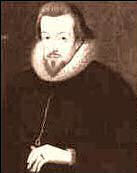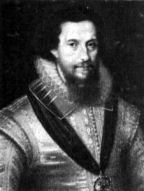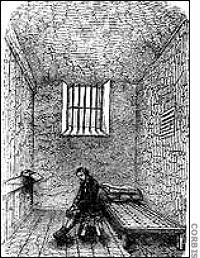



The Mysterious Lives of Arthur Saul
by Tony Storey
This article was originally published in the August 2006 edition of Soul Search, the journal of The Sole Society
In 2001, the Beinecke Library acquired for Yale University a
rare 1652 edition of The Famous Game of Chesse-Play by Arthur Saul, the first
chess manual to be written by an Englishman. Who was Arthur Saul and could we
place him on one of our family charts?
The book was first published in 1614 so our search for Arthur Saul, chess
master, would have to start in the previous century. As a background to our
quest, we should keep in mind that our man lived during a very turbulent period
in English history.
England began the sixteenth century as a Catholic country and in the early years
of the reign of Henry VIII, Protestants seeking to undermine the power of the
clergy were persecuted by the likes of Thomas More. Like most Englishmen of the
time, the king was a devout Catholic but was concerned to produce a male heir to
the throne. When the Pope refused permission for Henry to divorce his first wife
and marry Anne Boleyn, the king, aided by his minister Thomas Cromwell, passed
the Act of Supremacy of 1534, which removed the English church from the
authority of Rome. Thomas More was executed in 1535 for refusing to recognise
the King’s authority over the church.
Thomas Cranmer was now Archbishop of Canterbury, a position he held even after
Henry’s death through the short reign of the boy king, Edward VI. During this
time it was the Catholics who were persecuted. In 1553 Edward died of
tuberculosis. After a failed attempt to make Lady Jane Grey queen, Mary, the
Catholic daughter of Henry’s first wife, Catherine of Aragon, took the throne.
During her six-year reign, nearly 300 Protestants were burnt at the stake for
heresy or treason, including Thomas Cranmer.
After the death of Bloody Mary the second Act of Supremacy of 1559
re-established the Church of England under Elizabeth I. However, for both
religious and political motives, there continued to be numerous plots to
overthrow the monarch and restore the Church of Rome,
At first the search for Arthur Saul seemed all too easy. A number of sources
name Arthur Saul as a Gloucestershire-born Protestant clergyman, by 1546 a
fellow of Magdalen College, Oxford, who was exiled abroad during the reign of
the Catholic queen, Mary. Known to have had an altercation with an English
government agent during his exile in Heidelberg, he was able to return to
England after Mary died. Under the Protestant queen, Elizabeth, he rose to
prominence in the Church of England, holding senior posts in Salisbury, Bristol
and Gloucester. Unfortunately, he could not be the author of the chess manual
because he died in 1586. In the terms of his will of 1580, which survives at the
National Archives in Kew, he left property to his five children, including his
sons Arnold and William, who were minors at the time of his death. There is no
mention of a son called Arthur, yet intriguingly, the records of Magdalen,
Oxford, the clergyman’s old college, do include mention of an ‘Arthur Sale’
graduating in 1572.
By 1573 Queen Elizabeth had reigned for fifteen years but the number of
conspiracies had not diminished. Sir Francis Walsingham was then appointed
Secretary of State and is credited with organizing the intelligence service, a
network of spies to counter the threat from foreign powers and also from those
forces within that sought to overthrow Elizabeth and the Church of England. In
1584 it became law that any native-born subject who had become a Catholic priest
at any time since Elizabeth’s succession to the throne in 1558 was guilty of
treason punishable by death.
Mary Queen of Scots had been the focus of several intrigues against the English
government and Walsingham kept her under close surveillance. Eventually, by
intercepting her letters he was able to implicate her in the Babington Plot of
1586 and secure Elizabeth’s signature on her death warrant. Mary was executed at
Fotheringhay in 1587. By this time the population had been conditioned to fear
and distrust all foreigners, particularly Catholics.
At the end of the century we find another Arthur Saul, who was married and
settled in London although he did not spend all his time there. The papers of
the Star Chamber record a complaint by Arthur Saull, a gentleman of London, that
he was staying with his wife at the house of a friend in Gloucestershire in
August 1600 when the house was attacked by sixty armed men claiming to be acting
in the queen’s name and threatening to burn the house and strip his wife of all
her clothes. The link with Gloucestershire could suggest the London gentleman
was in some way related to the clergyman.
 Might
it be the same Arthur Saul who, in 1600, reported to Sir Robert Cecil,
the queen’s principle secretary, regarding the unsuccessful surveillance and
pursuit of an unnamed man in the Ludgate and St Paul’s area of London? The man
under surveillance was also sought at Court so we can assume it was someone of
substance that the security service had concerns about.
Might
it be the same Arthur Saul who, in 1600, reported to Sir Robert Cecil,
the queen’s principle secretary, regarding the unsuccessful surveillance and
pursuit of an unnamed man in the Ludgate and St Paul’s area of London? The man
under surveillance was also sought at Court so we can assume it was someone of
substance that the security service had concerns about.
 In
February 1601, Robert Devereux, second Earl of Essex, stepson of Robert
Dudley, Earl of Leicester and once a favourite of the queen, was arrested for
treason and subsequently executed along with a number of other rebellious young
malcontents. Sir Robert Cecil had also distrusted Sir Walter Ralegh for some
time but was unable to take action while the queen was alive. When Elizabeth
died in 1603 Ralegh was arrested for treason and confined in the Tower of
London. In 1605 the most famous conspiracy of all, the Gunpowder Plot to blow up
Parliament and the King, was thwarted in the nick of time by the security
service. Several Catholics, including Guy Fawkes, were tortured and executed.
In
February 1601, Robert Devereux, second Earl of Essex, stepson of Robert
Dudley, Earl of Leicester and once a favourite of the queen, was arrested for
treason and subsequently executed along with a number of other rebellious young
malcontents. Sir Robert Cecil had also distrusted Sir Walter Ralegh for some
time but was unable to take action while the queen was alive. When Elizabeth
died in 1603 Ralegh was arrested for treason and confined in the Tower of
London. In 1605 the most famous conspiracy of all, the Gunpowder Plot to blow up
Parliament and the King, was thwarted in the nick of time by the security
service. Several Catholics, including Guy Fawkes, were tortured and executed.
The authorities remained paranoid and government spies continued to uncover
conspiracies both real and imagined, but there was no further news of Arthur
Saul and we might reasonably have assumed he had died or at least retired from
the fray. In fact, nothing had been heard of him for more than a decade when in
1614 a book was published setting out the rules of chess. Could the author of
The Famous Game of Chesse-Play possibly be the same man who had spied for Sir
Robert Cecil all those years before?
Was it the same Arthur Saul who was sent to the continent in September 1615 by
the Secretary of State, Sir Ralph Winwood, in order to spy on English Catholics?
He is known to have ‘tailed’ priests returning to England and attended a mass,
presumably working undercover, at a house in Petticoat Lane, London, near to the
home of the Spanish ambassador.
The search for Arthur Saul then takes a dramatic turn. On 19 February 1617, an
Arthur Saul is arrested and charged with the rape of Hester Hopkins in the porch
of St Mary Abchurch in the City of London.
 He
finds himself imprisoned in Newgate, where coincidentally a number of
Catholic priests are being held. If this is our man, the situation looks grim
indeed, but there is a further twist in the tale. On 5 April he gives a
statement to the authorities. He tells them he is working for the state secret
service and is able to supply valuable information he has gathered whilst in
gaol concerning the recent escape of two women recusants and two priests.
He
finds himself imprisoned in Newgate, where coincidentally a number of
Catholic priests are being held. If this is our man, the situation looks grim
indeed, but there is a further twist in the tale. On 5 April he gives a
statement to the authorities. He tells them he is working for the state secret
service and is able to supply valuable information he has gathered whilst in
gaol concerning the recent escape of two women recusants and two priests.
Could it be that his arrest had been merely a cover, a device to enable him to
gain the trust of fellow prisoners and gather information? Unfortunately it is
unlikely we will ever know. Prisons at this time, not least Newgate, were foul,
unsanitary places. Arthur Saul became very ill, probably with gaol fever, a
virulent form of typhoid. He died in the prison on 29 April 1617.
So just how many men called Arthur Saul have we discovered?
There was the eminent churchman who died in 1586 who, as far as we know, neither
worked for the intelligence service nor wrote a book about chess.
There were two secret service agents with different signatures – the signature
in Newgate did not match that on the report to Sir Robert Cecil in 1600.
Nevertheless they may have been one and the same man.
Finally there was the author of a world-renowned work on the game of chess who
might have been one, or indeed both, of the secret agents.
Although not conclusive by any means, the final piece of evidence is this. In
1618, a year after the death in Newgate prison, a revised edition of The Famous
Game of Chesse-Play is published. A footnote tells us that its author, Arthur
Saul, is now dead.
Acknowledgement: Oxford Dictionary of National Biography